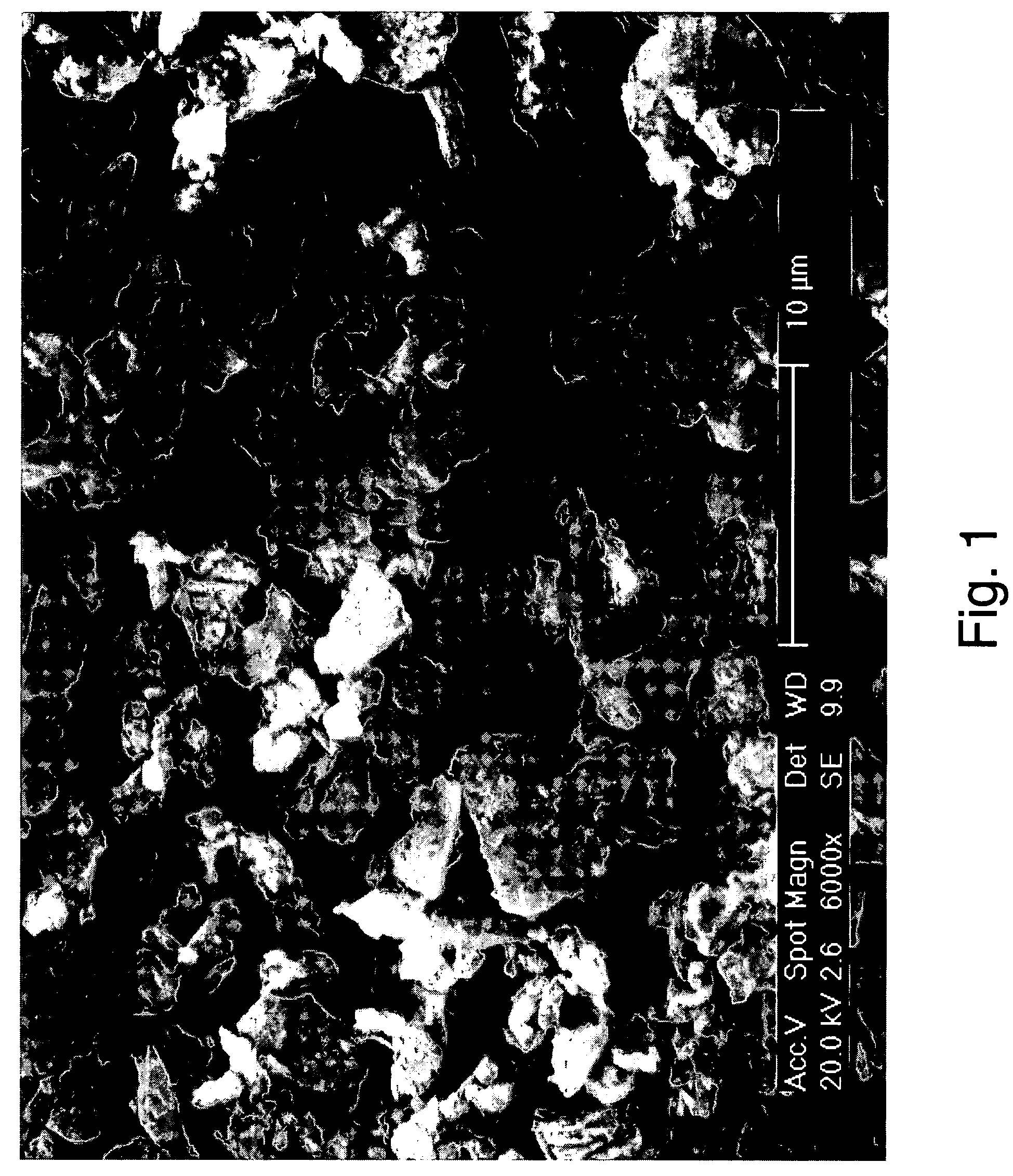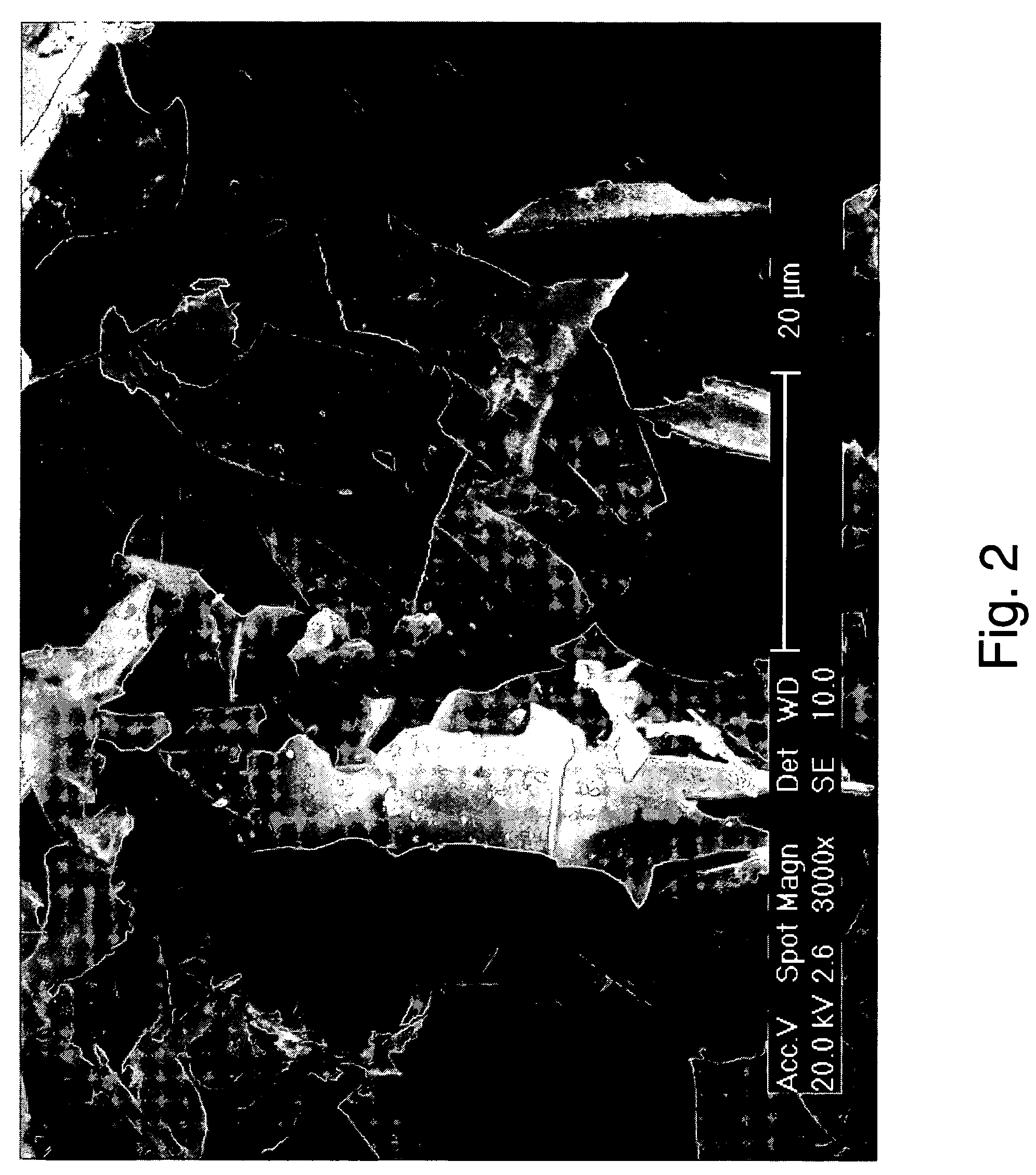Servicing a wellbore with wellbore fluids comprising perlite
a technology of fluids and wellbore, which is applied in the direction of wellbore/well accessories, sealing/packing, ceramics, etc., can solve the problems of low tensile and compressive strength of resulting cement compositions, slow development rate of ultimate strength development, and difficulty in setting retardation, so as to improve cement operation and physical properties. , the effect of improving the operation
- Summary
- Abstract
- Description
- Claims
- Application Information
AI Technical Summary
Problems solved by technology
Method used
Image
Examples
example 1
[0041]Two perlite samples, HARBORLITE M2B and HARBORLITE 205, were obtained from World Minerals Inc. of Santa Barbara, Calif. HARBORLITE M2B was unexpanded and ground perlite, and HARBORLITE 205 was expanded and ground perlite. The HARBORLITE M2B and HARBORLITE 205 particles were analyzed for particle size distribution by particle size analyzer (Model MS S 14), which was manufactured by Malvern Instruments Limited, Worcestershire, U.K. The mean particle size was 3.2 microns for the HARBORLITE M2B material, and 17.9 microns for the HARBORLITE 205 material. In addition, 90% of the HARBORLITE M2B material was below 7.6 microns, and 90% of the HARBORLITE 205 material was below 51.9 microns. 99.98% of the particles of the HARBORLITE M2B material passed through a 325 mesh screen, and 85.3% of the particles of the HARBORLITE 205 material passed through a 325 mesh screen.
example 2
[0042]A variety of sample cement compositions were prepared in the following example.
[0043]Composition 1 was prepared according to API Recommended Practice 10B, Twenty-Second Edition, December 1997, by mixing 56% Class H cement bwoc, 22% POZMIX A bwoc, 22% fumed silica bwoc (available as SILICALITE from Halliburton Energy Services, Inc.), and 2% bwoc bentonite. POZMIX A refers to cement commercially available from Halliburton Energy Services, Inc. This mixture was added to 112.6% bwoc water and 0.125 gallons of D-AIR 3000 L per sack of Class H cement to obtain a slurry with a density of 12.0 pounds per gallon (ppg). D-AIR 3000 L refers to a defoamer commercially available from Halliburton Energy Services, Inc. The slurry was poured into molds for compressive strength and tensile strength measurements and cured for 72 hrs at 190° F. under a pressure of 3,000 psi in an autoclave. Preparation of samples and measurement of compressive strengths was done according to API Recommended Prac...
example 3
[0047]Composition 3 was similar to Composition 1 except that additional carbon fibers available from Halliburton Energy Services, Inc. as FDP C684 at 1% bwoc and glass fibers available from Halliburton Energy Services, Inc. as FDP C734 at 1% bwoc were added, and the water amount was adjusted to obtain a 12 ppg slurry. The compressive and tensile strengths were measured as described in Example 2. Additionally, cement samples for measurement of mechanical properties were prepared by curing the cement slurry in 2′×5″ metal alloy cylinders under a pressure of 3,000 psi at 190° F. for 72 hrs. The cylindrical samples were removed, cut, and polished to obtain 2″×4″ cylinders. The load vs displacement measurements were performed on MTS Load Frame equipment manufactured by Eden Prairie, Minn. Uni-axial and tri-axial stress-strain tests were performed on cylindrical samples to determine Young's modulus, Poisson's ratio (PR), and Friction angles. Tests were performed as prescribed in ASTM D 31...
PUM
| Property | Measurement | Unit |
|---|---|---|
| mean particle size | aaaaa | aaaaa |
| mean particle size | aaaaa | aaaaa |
| mean particle size | aaaaa | aaaaa |
Abstract
Description
Claims
Application Information
 Login to View More
Login to View More - R&D
- Intellectual Property
- Life Sciences
- Materials
- Tech Scout
- Unparalleled Data Quality
- Higher Quality Content
- 60% Fewer Hallucinations
Browse by: Latest US Patents, China's latest patents, Technical Efficacy Thesaurus, Application Domain, Technology Topic, Popular Technical Reports.
© 2025 PatSnap. All rights reserved.Legal|Privacy policy|Modern Slavery Act Transparency Statement|Sitemap|About US| Contact US: help@patsnap.com



